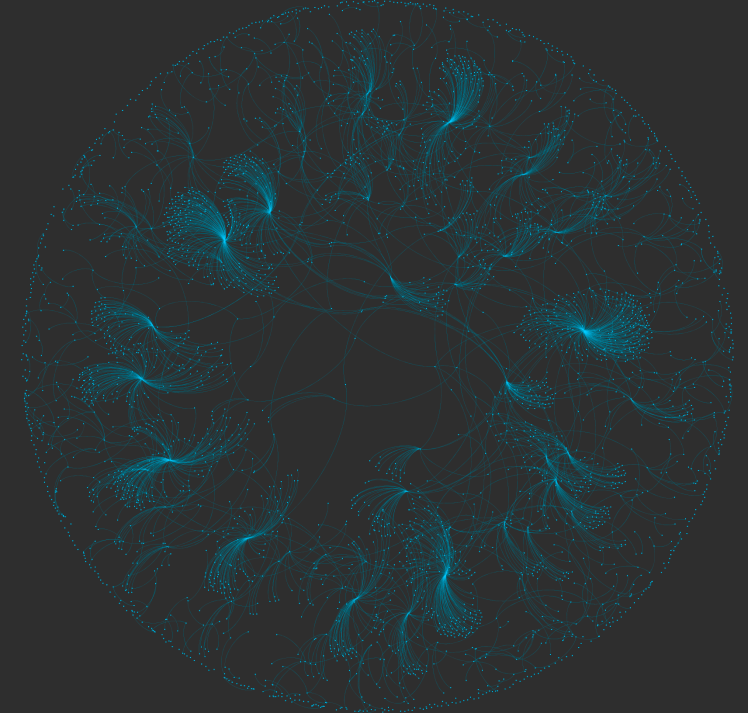Let us find out external public disposition towards Russian current president regarding personal qualities, foreign policies and reelection. We would now examine in what light he is perceived outside of his own country, where there is virtually no censorship on opinion about him.
This study is interesting because within Russia it is said that his approval rating is around 86% [1].
Firstly, who is Putin?
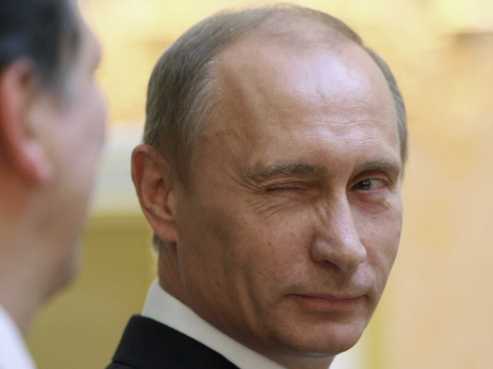
Vladimir Putin is a Russian politician serving as the current President of the Russia since 7 May 2012, previously holding the position from 2000 until 2008. He was Prime Minister of Russia from 1999 until the beginning of his first presidency in 2000, and again between presidencies from 2008 until 2012. During his first term as Prime Minister, he served as Acting President of Russia due to the resignation of President Boris Yeltsin. During his second term as Prime Minister, he was the chairman of the ruling United Russia party.
So, when you look at the whole picture, he has been de facto leader of the country for the last 19 years.
Overall picture.
Let’s now use Voyant tool as a first stepping stone in order to see what people think of Russia via the simple search of text associations with a hashtag #Russia in Twitter-space. Those posts on twitter are mainly made by general foreigners or English speaking Russians (mainly from out of the country).
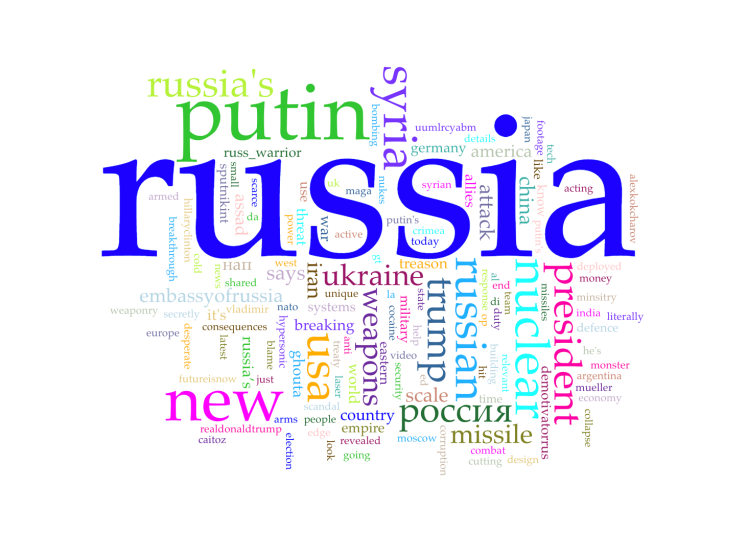
As we can see from the picture above, surname Putin is almost synonymous with Russia. As it pops up as a first most popular keyword only second to “Russia” itself.
Initial disposition of people.
We can also use the same Voyant tool in order to see what are peoples attitudes outside of Russia towards Russia itself and its synonymous leader.
When we select the tweets with the keyword “nuclear” – the most commonly used words in the same tweet are not “treaty” or “energy”. But it is “weapons” and “attack”. Which signifies the negative disposition of people.
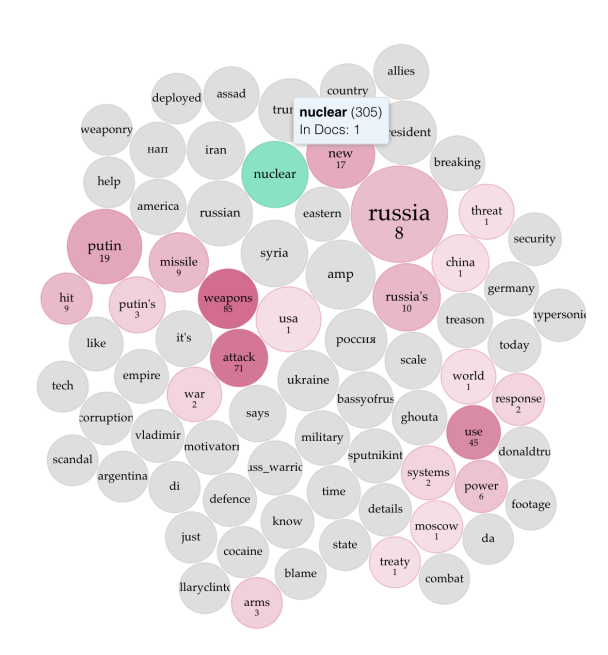
How are opinions formed.
There are two prevailing theories of how the general opinions of people may be formed in a world of media. One is a two-step-flow theory that indicates that any information is heavily influenced by opinion leaders, who in turn, disperse this information to general masses of people in a way that they influence them to align to their own opinion. Second one is a mass effect theory that says that people would confer to the mass media channels’ view of each political situation.
After utilising Tableau, we can see that the number of tweets, mentions and retweets in any given time period. For the visualisation a day of 18th of March was chosen at random and exhibits exact same dynamics as any other day of March or April so far. Although it is a notable day of elections and a centre of our time frame.
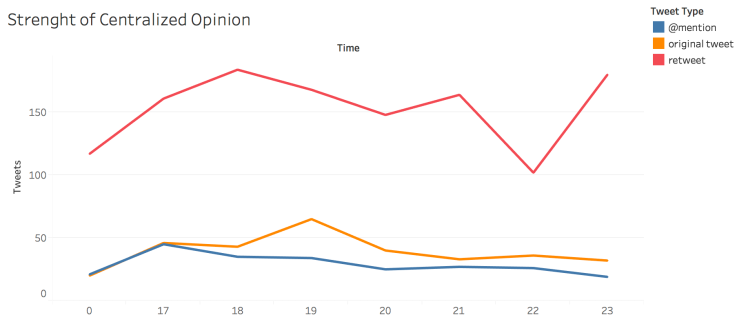
If not confirms, it strongly indicates to the heavy lean on two-step-flow theory of major influence of opinion leaders, as the amount of retweets is staggeringly higher then both tweets and mentions combined. It means that the majority of opinions in the twitter-sphere on the subject of Putin is made up mainly from the views of key opinion leaders.
It helps us in the further stage of research into the attitudes of people towards Putin, because we can focus on the most followed opinion leaders within our topic and analyse their positions and feelings towards the Russia’s leader.
Wider analysis of opinion formation.
Now we will make use of the Gephi visualisation tools in order for us to solidify or soften the hypothesis of key opinion leaders within the twitter-sphere.
For the snapshot of the tweets concerned with “Putin and #Putin” we filtered our tweets to only those ones which are in English and are posted by profiles with at least 500 followers and posted on March 17 to March 19 (3 days around the Russian elections). It indicates that in this selected data set we are looking a pool full of opinion leaders to some extent.
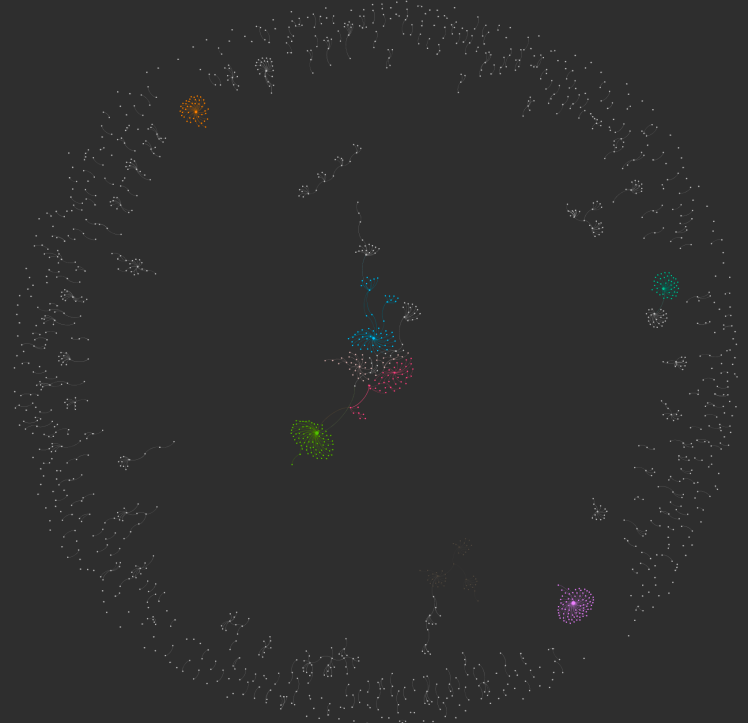
As we can see from the picture above – even in the pool of opinion leaders there are those with such a huge weight of their views, that their posts are being retweeted by people who are in their own right opinion leaders.
All the grey peripheral circle represents the stand-alone attitudes towards Putin, genuinely generated by people and not copied from the clustered central tweets.
Now let us look closer in order to ascertain what kind of opinions are formed in main clusters and by who.

Above we can see all of the account names for the key players.

On visualisation above we see the enhanced and selected clusters of opinions.
After checking the twitter – we can see that:
@Trumptweets2020 is a satire account that makes fun not only about Trump but Putin as well, portraying him in a negative light
@AndyOstroy more or less anti Trump, but neutral to Putin and Russia
@TheSWPrincess negative to Putin, condemning him for “that President for life thing that he perfected”
@AmbJohnBolton is an account for the assistant to the President for National Security Affairs (NSA), strong negative opinion towards Putin for meddling in the US elections
@_SierraWhiskee actually is of a good view towards Putin, but negative to the US
@StopTrump2020 neutral to Putin but really negative towards the US
@DavidRomeiPHD strong negative opinion towards Putin
We can see that after reviewing the attitudes of key opinion leaders towards Putin, the results are inconclusive. But nevertheless the favourable opinion of Putin is really lacking.
Further Steps
As a next step, I coded the data for the all of the most prominent tweets from most followed people from a selected time frame (50 profiles with most amount of followers from each day). In total, there were 150 Tweets:
81 of the tweets carry a negative comment, 37 – with a positive attitude, and 32 – neutral.
So we can see that the most popular opinion by far not a kind one.
Than I expanded my coding in order to show how clusters may interact. I coded each tweet by the attitudinal scale towards Putin, starting from 1 – Negative, then 2 – Neutral and going to 3, as a Positive.
Colour code is:
Negative – RED, Neutral – GREY, Positive – GREEN

Comparison to Russia
In Russia we see a slightly different picture that shows us more interconnectedness amongst agents. Less amount of nodes, but much higher amount of edges. Also the peripheral circle is not that apparent, which means that more opinions are formed independently.
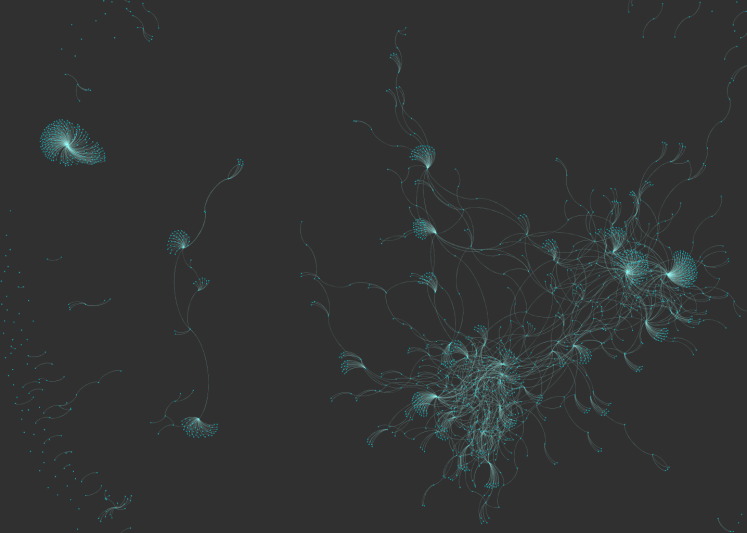
Searching for similarities
But when we try searching for #RussianPresident OR #RussianElection and add it to the mix to Putins name in English language twitter-sphere – we get an interesting result which points out the similarity to Russian language search with closer and more numerous inter-connectedness.
